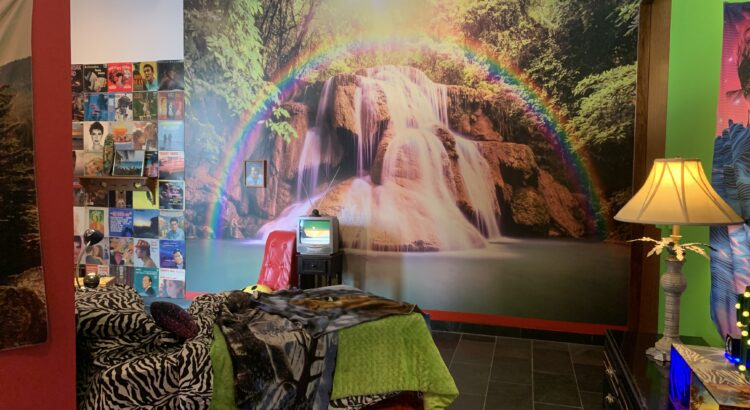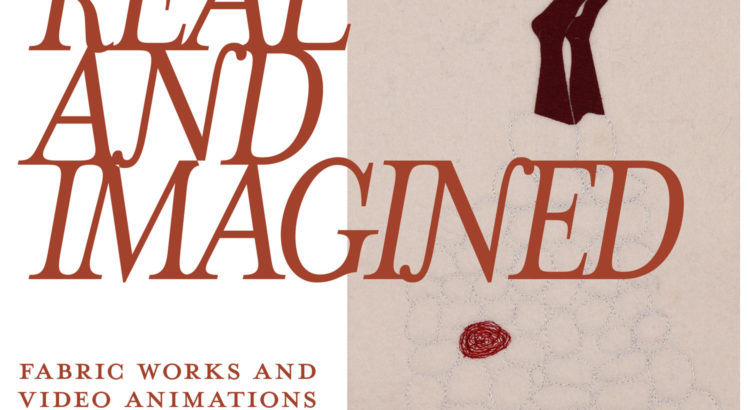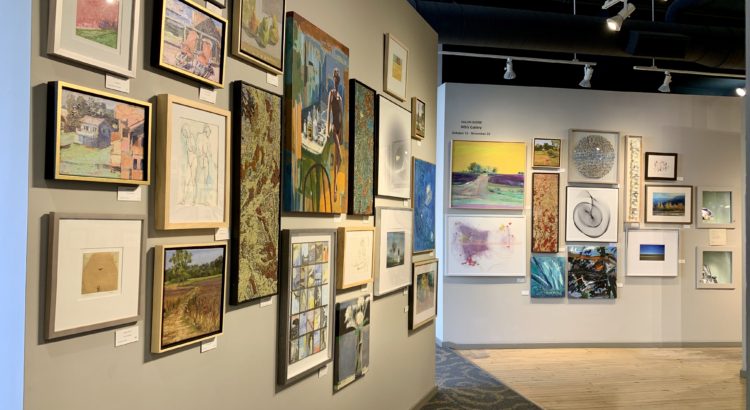As a Stamps student eagerly stepping into my second year, I find that any glimpse I can get into the work of upperclassmen at Stamps is a treasure. The talent of Stamps students, refined by years of practice, discipline, and creative freedom, is manifested into varieties of works scattered throughout Stamps hallways. Although I enjoy the intricate jewelry and fiber sculptures put on display, many display cases remain empty; I often feel a disconnect from my fellow art students, constantly craving a more in-depth look at how Stamps allows ambition to blossom. The Grow(ing) exhibition was the first deep dive into Stamps work that I have experienced, and it was transformative.
Grow(ing) is a senior exhibition, showcasing the work of BA, BFA, and Interarts students at Stamps. The exhibition is arranged as a maze of large cubicles, each containing the work of one artist, accompanied by a plaque. Art across all mediums is included, from time-based art to wearable sculpture to projections on a floor. The variety is what immediately struck me the most— each artist was able to convey their personal message in truly whatever format they wanted, and this allowed them to communicate effectively, each work standing out from the rest. Three-dimensional art forms dominated two-dimensional, noninteractive art forms in this exhibition, which was shocking to me. I feel as if most Stamps students enter the curriculum with a focus on traditional two-dimensional forms— drawing, painting, et cetera— but Grow(ing) emphasizes the students’ capacity to expand their comfort zones. Stamps’ encouragement to explore creative possibilities paid off in the form of plant-adorned mirrors and enigmatic ceramic furniture sets. Even with limited time on my hands, I couldn’t help but stop at each and every cubicle to absorb the individuality of each space and how the artist’s energy dominates it.
Many artists combined mediums to create deeply layered works. One of my favorites at the exhibition was Silencio by Lissette Quintanilla, a collection of beadwork wearable sculptures that were both displayed on the wall and photographed. Lissette explores her heritage, upbringing, and the intersections of her identity through these delicate sculptures, portraying symbols of identity in a three-dimensional format. Although the sculptures are small, the obvious dedication behind them gave them an air of sophistication that demands your attention. I found that many smaller works throughout the exhibition were outstanding in the same way— although small, they are mighty, carrying a powerful message in a compact and detailed vessel.
Many of the exhibitions were larger sets, complete with instructions on how to interact with the work, lighting elements to boost the atmosphere, or sound elements. Each cubicle represented a fragment of an enigmatic world, a brief glimpse into the colorful mind of a creator. For non-art students and art students alike, the Stamps Senior Exhibition— and any Stamps exhibition at that— is a gift. Student exhibitions are a source of inspiration that naturally renews, encouraging its viewers to create more art, which will build future exhibitions, which will be viewed by more creatives searching for inspiration, and the cycle continues. Art is a beautiful thing, and fleeting moments to stop and appreciate it should be grasped. I look forward to future Stamps exhibitions and you should too!














 WSG member
WSG member 
